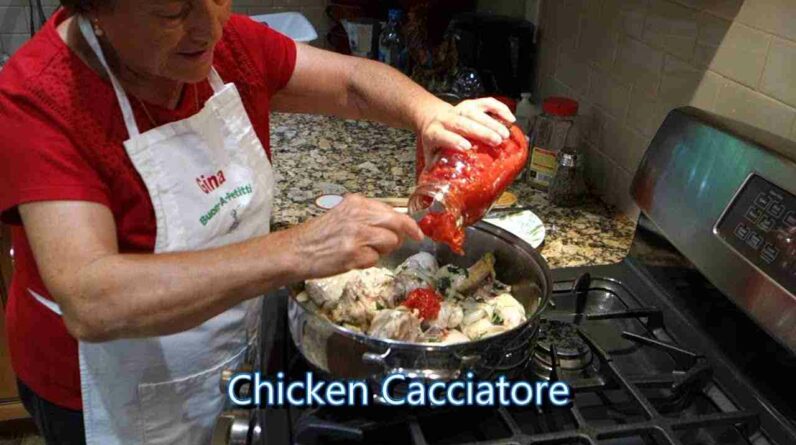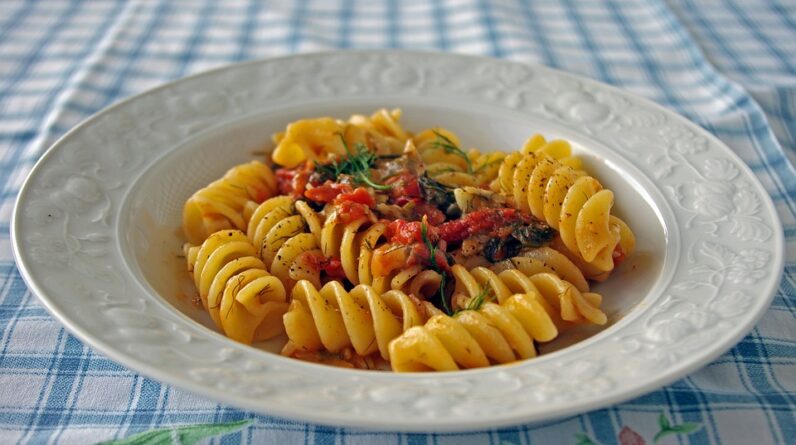Welcome to Espresso Tasting 101 – A Beginner’s Guide! If you’re new to the world of espresso and want to learn how to appreciate and distinguish different flavors in this beloved coffee drink, you’ve come to the right place. In this article, we’ll walk you through the basics of espresso tasting so you can confidently order your next shot like a pro.
Whether you’re a coffee enthusiast looking to expand your palate or just someone curious about what makes espresso so special, this beginner’s guide will provide you with all the information you need to get started. From understanding the different types of espresso beans to recognizing the key flavors and aromas in a well-crafted shot, we’ll cover everything you need to know to start your espresso tasting journey. So grab a cup of your favorite brew and get ready to dive into the wonderful world of espresso tasting!

Understanding Espresso
First up, we’ll explore the origin of this beloved coffee drink and how it has evolved over time. Then, we’ll uncover how espresso differs from other types of coffee, like drip brew or French press. Finally, we’ll discuss the importance of the espresso machine in creating that perfect shot of espresso. So grab a cup of your favorite coffee, sit back, and get ready to learn all about the wonderful world of espresso! Let’s brew some knowledge together!
The Origin of Espresso
The roots of espresso can be traced back to Italy in the late 19th century. Italian coffee lovers were seeking a quicker way to enjoy their favorite beverage without compromising on flavor. And thus, the espresso was born. The concept of applying pressure to force hot water through finely-ground coffee beans led to the creation of this concentrated and rich brew that we know and love today.
Imagine walking the charming streets of 19th-century Italy, savoring a freshly brewed espresso at a bustling café. The rich history and tradition behind this beloved beverage add to its allure, making each sip a truly special experience. Let’s delve deeper into the origins of espresso to truly appreciate its unique and timeless appeal.
How Espresso Differs From Other Coffees
Espresso stands out in its unique brewing process. Unlike drip coffee, where hot water slowly drips through coffee grounds, espresso is made by forcing hot water through finely-ground coffee beans at high pressure. This method creates a concentrated and rich flavor profile that’s unmatched by any other brewing technique.
Espresso also has a distinct taste that sets it apart from other coffees. It tends to be bolder, more intense, and has a velvety texture that lingers on your palate. The brewing time for espresso is much shorter than other brewing methods, resulting in a robust and flavorful shot that can be enjoyed on its own or as the base for a variety of delicious coffee beverages. So, next time you take a sip of your favorite espresso drink, savor the unique characteristics that make it different from any other coffee out there.
The Importance of the Espresso Machine
The espresso machine is the heart and soul of any coffee shop or home brewing setup, responsible for extracting the intense flavors and aromas that make espresso so special.
The importance of the espresso machine lies in its ability to control the pressure, temperature, and extraction time necessary for producing a perfect shot of espresso. It requires precision and expertise to operate, ensuring that each cup is consistently delicious.
Investing in a high-quality espresso machine is essential for coffee enthusiasts who crave that authentic espresso experience. Whether you opt for a traditional manual machine or a modern automatic one, the right espresso machine can elevate your coffee game and bring a touch of sophistication to your daily routine. So, next time you savor a velvety espresso shot, remember to thank the trusty espresso machine that made it all possible!
The Beans Matter
When it comes to coffee, choosing the right beans is crucial for a great cup. Whether you prefer single-origin or blends, the decision can impact the flavor profile of your brew. Understanding the role of roast profiles is also key in bringing out the desired taste and aroma. Single-origin beans offer unique flavors that showcase the terroir, while blends can provide a balanced and complex taste. Experimenting with different beans and roast profiles can help you discover your favorite brew. Remember, the beans matter, so don’t be afraid to explore and enjoy the journey of coffee tasting!
Choosing the Right Beans
Choosing the right beans is essential to achieving the flavor profile you desire. Whether you prefer a bold and rich taste or a more delicate and fruity one, the type of beans you select will make a significant difference.
When selecting beans, consider factors such as the origin, processing method, and roast level. Some beans are known for their chocolatey undertones, while others boast bright citrus notes. Experimenting with different beans can be a fun and rewarding experience, allowing you to discover your favorite flavors.
Remember, the key to a great espresso starts with quality beans, so don’t be afraid to explore and find the perfect match for your taste buds. Stay tuned as we delve into the role of roast profiles and the debate between single-origin and blends.
The Role of Roast Profiles
Choosing the right beans is crucial in creating that perfect cup of espresso. One key factor to consider is the roast profile of the beans. The roast profile determines the flavor, aroma, and body of the espresso. Lighter roasts tend to preserve the unique characteristics of the beans, resulting in brighter and more acidic flavors. On the other hand, darker roasts bring out more intense and smokier flavors, but may mask some of the bean’s inherent qualities. Finding the perfect balance in roast profile is essential to achieving your desired taste in espresso. Experimenting with different roast profiles can be a fun and exciting journey in discovering your favorite flavors. So, don’t be afraid to explore and see how different roast profiles can elevate your espresso experience!

Single-Origin vs. Blends
Did you know that the type of beans you choose can make a big difference in the flavor of your coffee? When it comes to Single-Origin vs. Blends, there are some key differences to consider. Single-origin beans come from one specific region, offering a unique flavor profile that showcases the characteristics of that particular area. On the other hand, blends combine beans from different regions to create a more complex and balanced flavor.
If you enjoy exploring different flavor profiles and experiencing the nuances of different regions, single-origin beans may be the way to go. However, if you prefer a more consistent and well-rounded flavor, blends might be more up your alley. Whichever you choose, remember that the beans you select will play a crucial role in the overall taste of your espresso. So go ahead, experiment, and find the perfect beans that speak to your taste buds. Cheers to delicious espresso!
Grinding for Espresso
Finding the right grind size can make or break your shot. Burr grinders offer more control and consistency compared to blade grinders, making them a popular choice among espresso enthusiasts. Adjusting the grind can also greatly impact the flavor of your espresso, allowing you to customize your brew to your liking. So, whether you prefer a fine or coarse grind, understanding these factors is key to achieving that perfect cup of espresso. Let’s dive into the world of grinding for espresso together!
The Importance of Grind Size
The importance of grind size when it comes to brewing the perfect espresso. Picture this: a finely tuned espresso grinder meticulously grinding coffee beans to the ideal consistency. The grind size plays a crucial role in extracting the flavors and aromas from the beans.
When it comes to achieving that perfect shot of espresso, the grind size can make or break your brew. A finer grind size allows for a slower extraction, resulting in a more intense and flavorful shot. On the other hand, a coarser grind size leads to a faster extraction, producing a weaker and less complex espresso. Experimenting with different grind sizes can help you fine-tune your brewing process and tailor your espresso to your taste preferences. Remember, the grind size is a key player in the quest for the perfect cup of espresso.
Burr vs. Blade Grinders
When it comes to choosing a grinder for your espresso, you’ll often hear about two main types: burr and blade grinders.
Burr grinders are known for their consistency in grind size, which is key for achieving a balanced and flavorful espresso shot. The beans are ground between two burrs, resulting in uniform particles that extract evenly. On the other hand, blade grinders use a spinning blade to chop the beans, which can lead to uneven grounds and a less precise extraction.
While blade grinders are generally more affordable, burr grinders are worth the investment for those serious about their espresso quality. The control over grind size and consistency that burr grinders provide can make a noticeable difference in the flavor of your espresso. So, when it comes to choosing a grinder, remember: burr is the way to go for that perfect shot of espresso.
Adjusting the Grind for Flavor
When it comes to perfecting your espresso flavor, adjusting the grind size is key. The grind size can greatly impact the taste of your espresso, so finding the right balance is essential.
Whether you’re using a burr or blade grinder, the grind size can be adjusted to achieve different flavors. A finer grind will result in a stronger, more intense taste, while a coarser grind will produce a milder flavor. Experimenting with different grind sizes allows you to tailor your espresso to your personal taste preferences.
Don’t be afraid to play around with the grind size until you find the perfect balance of flavor for your espresso. Remember, a small adjustment can make a big difference in the taste of your brew. So, grab your grinder and start experimenting to find your ideal espresso flavor profile!
Mastering the Espresso Machine
Understanding pressure and temperature are key to pulling the perfect shot. It’s all about finding that sweet spot for a delicious brew. Next up, let’s talk about the art of tamping. This step is crucial for ensuring even extraction and a balanced flavor profile. Lastly, pulling the perfect shot is where it all comes together. Pay attention to the flow rate and crema to get that amazing espresso. With a little practice and patience, you’ll be a pro at making the perfect cup in no time!
Understanding Pressure and Temperature
When it comes to pressure, aim for around 9 bars of pressure for the optimal extraction. This will ensure that the water passes through the coffee grounds at the right speed, extracting all those delicious flavors without over-extracting and causing bitterness.
Temperature is just as important as pressure. The ideal temperature for brewing espresso is between 195°F and 205°F. This range allows for the perfect balance of flavors to be extracted from the coffee grounds, resulting in a smooth and well-balanced shot.
By paying attention to both pressure and temperature, you’ll be well on your way to pulling the perfect shot every time. Keep experimenting and tweaking until you find the right combination that suits your taste buds!
The Art of Tamping
Tamping is not just about pressing down on the coffee grounds in the portafilter; it’s about finding the perfect balance between too loose and too tight, ensuring an even extraction of flavors.
When tamping, remember to use a consistent pressure and technique to create a level surface for the water to flow through. A slight twist at the end can also help to polish the puck and improve the overall extraction. It may take some practice to perfect your tamping skills, but the results are well worth the effort.
So, next time you’re preparing to pull that perfect shot of espresso, pay close attention to your tamping technique. It could be the difference between a mediocre cup and a truly exceptional one!

Pulling the Perfect Shot
To achieve that ideal shot, you’ll want to keep an eye on the espresso as it flows out of the machine. The goal is to have a rich, golden crema on top, indicating a well-extracted shot. Remember, the extraction time should ideally be around 25-30 seconds for a single shot.
Pay attention to the aroma, flavor, and body of the espresso as it pours into your cup. Adjust your grind size, dose, and tamping pressure accordingly to achieve the perfect balance. Don’t be afraid to experiment and fine-tune your technique to find what works best for you.
With practice and patience, you’ll soon be pulling consistently delicious shots that will impress even the most discerning coffee connoisseurs. Enjoy the process and savor the fruits of your labor!
The Science of Extraction
What exactly is extraction and how does it work? We’ll then explore how to recognize when your extraction is either under or overdone. Don’t worry, I’ll also share some tips on adjusting variables like grind size, water temperature, and brew time for that perfect cup of coffee or tea. Trust me, by understanding these concepts, you’ll be able to consistently brew your favorite beverages just the way you like them. Ready to unlock the secrets of extraction? Let’s get started!
What Is Extraction?
Extraction is the process of dissolving the flavors and aromas from the coffee grounds into the water, resulting in a delicious shot of espresso. It’s like coaxing out the very best from your coffee beans, unlocking a symphony of tastes that will dance on your taste buds.
During extraction, the water passes through the compacted coffee grounds, picking up the solubles that give espresso its unique characteristics. The duration and pressure of this process play a crucial role in determining the quality of your shot. Understanding the science behind extraction will empower you to manipulate variables such as grind size, water temperature, and brew time to achieve the perfect balance of flavors in your espresso.
Stay tuned as we unravel the mysteries of recognizing under and over-extraction, and how to adjust variables for optimal extraction. Let’s brew some magic together!
Recognizing Under and over-Extraction
Recognizing under and over-extraction is key to achieving that balanced, delicious flavor we all crave. Under-extraction occurs when not enough flavor has been extracted from the coffee grounds, resulting in a weak, sour taste. On the other hand, over-extraction happens when too much flavor has been pulled, leading to a bitter, harsh flavor profile.
To avoid these pitfalls, pay attention to the color and taste of your espresso. A well-extracted shot will have a rich, golden crema and a balanced flavor profile. Adjusting variables such as grind size, brew time, and water temperature can help you achieve optimal extraction every time. Keep experimenting and fine-tuning your technique to create the perfect cup of espresso. Cheers to delicious coffee!
Adjusting Variables for Optimal Extraction
Start by experimenting with your grind size – a finer grind will slow down extraction, while a coarser grind will speed it up. Adjust the grind until you find the sweet spot that suits your taste preferences. Next, pay attention to the brew time – a shorter time may result in under-extraction, while a longer time can lead to over-extraction. Keep an eye on the flow rate and adjust accordingly.
Remember, consistency is key when adjusting variables. It may take some trial and error, but with practice, you’ll be able to achieve that perfect balance of flavors in your espresso. Happy brewing!
Decoding Espresso Tasting Notes
When it comes to decoding espresso tasting notes, it’s important to start by identifying basic flavors. From there, understanding the role of acidity and body in creating a well-balanced cup of espresso is key. Acidity adds brightness and liveliness to the flavor profile, while body gives it depth and texture. To further enhance your tasting experience, familiarize yourself with the flavor wheel. This tool can help you pinpoint specific notes and nuances in your espresso, making it easier to appreciate the complexity of different beans and roasts. Happy tasting!
Identifying Basic Flavors
When tasting espresso, it’s essential to identify the basic flavors that make up the complex profile of each cup. Look for familiar tastes like chocolate, nutty, fruity, floral, or spicy notes. These basic flavors serve as building blocks for more intricate tasting experiences.
By honing your ability to identify these basic flavors, you’ll sharpen your palate and enhance your overall coffee tasting experience. Pay attention to the subtle nuances in each sip, savoring the interplay of flavors that dance on your taste buds. With practice, you’ll become more adept at pinpointing specific notes and nuances in your espresso, enriching your coffee appreciation journey. So, let’s embark on this flavorful adventure together!
The Role of Acidity and Body
Acidity in espresso refers to the brightness and liveliness that certain flavors bring to the table. It can range from fruity and tangy to citrusy and sparkling, adding a delightful zing to your cup. On the other hand, body relates to the weight and texture of the espresso, from light and silky to heavy and creamy. Balancing acidity and body is key to achieving a harmonious and well-rounded flavor profile in your espresso.
When tasting espresso, pay attention to how acidity and body interact. A bright, high-acidity espresso with a light body might feel refreshing and vibrant, while a rich, heavy-bodied espresso with a lower acidity could bring a sense of depth and richness. Understanding how these elements play off each other will elevate your appreciation of the complex flavors in your cup. Let’s explore further!
Understanding the Flavor Wheel
This tool is essential for identifying and categorizing the different flavors present in your espresso. The Flavor Wheel is like a compass, guiding you through the vast spectrum of tastes you may encounter.
When you take a sip of espresso, you might notice basic flavors like chocolate, nutty, fruity, or floral notes. These are the building blocks of your coffee’s taste profile. Acidity and body play crucial roles in shaping these flavors, adding layers of complexity to your cup.
By familiarizing yourself with the Flavor Wheel, you can better articulate the nuances of your espresso experience. It’s like having a secret decoder ring that unlocks the mysteries of your coffee’s taste. So next time you enjoy a shot of espresso, take a moment to appreciate the intricate flavors dancing on your palate, guided by the magical Flavor Wheel. Happy tasting!
The Importance of Milk
Choosing the right milk can make a big difference in the taste and texture of your coffee drinks. Whether it’s whole milk for a creamy latte or oat milk for a dairy-free option, the possibilities are endless. Next, mastering techniques for frothing milk is essential for creating that perfect velvety texture. And finally, learning how to create latte art adds that special touch to your coffee creations. So, whether you’re a coffee enthusiast or just love a good latte, milk plays a crucial role in elevating your coffee experience.
Choosing the Right Milk
When it comes to choosing milk for your espresso-based drinks, opt for whole milk for a creamier texture and richer flavor. If you prefer a lighter option, try using 2% milk, which still provides a creamy consistency without the extra fat. For a dairy-free alternative, almond milk can add a nutty flavor that complements the espresso beautifully.
Experiment with different types of milk to find the one that suits your taste preferences best. Remember, the quality of the milk will greatly impact the overall taste and mouthfeel of your latte or cappuccino. So, choose wisely and elevate your coffee experience with the perfect milk match.
Techniques for Frothing Milk
When it comes to frothing milk, there are a few key techniques to keep in mind. Start by using cold milk straight from the fridge and ensure your steam wand is positioned correctly just beneath the surface. The goal is to create a creamy microfoam that enhances the overall taste experience. Remember to keep a close eye on the temperature, aiming for around 140°F for the ideal froth. With practice and patience, you’ll master the art of frothing milk like a pro, elevating your beverages to a whole new level of deliciousness. Cheers to perfectly frothed milk and delightful espresso creations!
Creating Latte Art
When it comes to creating latte art, the type of milk you use can make a significant difference. Opt for whole milk if you prefer a creamier texture or try almond milk for a nuttier flavor profile.
To achieve that velvety texture essential for latte art, mastering the art of frothing milk is key. Start by steaming the milk at the correct temperature and creating that silky microfoam. Once you’ve got the perfect base, it’s time to get artistic!
Creating latte art is not just about aesthetics; it’s about adding that final touch of magic to your espresso creation. Whether you’re pouring a heart, a rosetta, or even attempting a swan, remember to pour with confidence and watch as your latte transforms into a work of art.
Expanding Your Espresso Horizons
Pairing espresso with food is a fun adventure, discovering perfect flavor combinations. Consider participating in coffee tastings and competitions to refine your palate and learn from other coffee enthusiasts. By embracing these opportunities, you can deepen your appreciation for espresso and all it has to offer. So, grab your favorite mug and let’s embark on this exciting journey together! Cheers to new espresso experiences!
Exploring Different Espresso-Based Drinks
Espresso isn’t just about a simple shot anymore – there are endless possibilities to try!
Have you ever heard of a macchiato, cortado, or affogato? These are just a few examples of the many delicious espresso-based drinks out there waiting for you to discover. Each one offers a unique flavor profile and experience that will surely delight your taste buds.
Don’t be afraid to step outside your comfort zone and try something new. Whether you prefer a creamy latte or a bold americano, there’s an espresso-based drink for everyone. So next time you’re at your favorite coffee shop, why not give one of these specialty drinks a try? You never know, you might just find your new favorite!
Pairing Espresso with Food
One exciting aspect of the espresso world is pairing this rich and complex beverage with food.
Pairing espresso with food can truly enhance your culinary experience. The bold flavors of espresso can complement a variety of dishes, from sweet pastries to savory meats. For example, a rich espresso can beautifully balance the sweetness of a chocolate dessert, or cut through the richness of a creamy pasta dish.
Next time you enjoy a cup of espresso, consider how it can elevate your dining experience. Experiment with different food pairings to discover new flavor combinations and sensations. Who knows, you might just stumble upon the perfect espresso and food pairing that will delight your taste buds!
Participating in Coffee Tastings and Competitions
Joining a coffee tasting event can be a fantastic way to expand your knowledge and appreciation for different flavors and brewing techniques. It’s a fun and interactive way to connect with fellow coffee enthusiasts and learn from experienced baristas.
Competing in coffee competitions can also be a thrilling experience that pushes you to showcase your skills and creativity. Whether it’s a latte art throwdown or a barista championship, these events offer a platform to challenge yourself, gain valuable feedback, and potentially even win some cool prizes.
So, why not step out of your comfort zone and dive into the exciting world of coffee tastings and competitions? You never know what new flavors, techniques, and friendships you might discover along the way!
Wrapping Up
So there you have it, my fellow espresso enthusiasts! I hope this beginner’s guide to espresso tasting has helped demystify the world of espresso for you. Remember, understanding the basics of espresso, the importance of quality beans, and mastering your grind and extraction process are key to a great cup of espresso.
Don’t be afraid to experiment and try new things with your espresso. Whether it’s exploring different tasting notes, mastering latte art with milk, or trying out new espresso brewing techniques, there’s always something new to learn and discover. Keep practicing, keep tasting, and most importantly, keep enjoying the wonderful world of espresso! Cheers to many delicious cups of espresso in your future!








